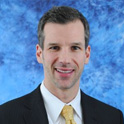
By Ken Zimmer and Adam Vanevenhoven
Over the last two years the Marketing and Distribution (MaD) council has made it a priority to address the ongoing issue of the underinsured middle market by supporting research to explore the problem in depth. This article will briefly summarize the research undertaken and then explore its benefits for current distribution strategies with an industry expert, Ken Zimmer.
Ken is the sales development manager in New York Life’s North Shore General office in Chicago. Previously he was an agent who qualified for Executive Council (2010), Premier Level Executive Council (2011) and became a qualifying member of MDRT (2010).
In 2012, MaD, along with the Committee on Life Insurance Research, and Product Development and Reinsurance Sections, hired Dr. Walter Zultowski of WZ Research + Consulting to lead a marketing research project with a different focus than typical studies completed in the past. This study focused on segmenting the middle market consumer according to attitudes toward life insurance. The subset of the middle market chosen was young families between the ages of 25 and 40 with household income of $35k-$125k. The market segmentation approach utilized was a standard (K-means) cluster analysis, which, in statistical terms, attempts to maximize variation between the identified segments and minimize variation within each segment.
The research found that the young family middle market consumer consists of three segments based on attitude: Protectors, Planners and Opportunists. As described on the research summary page on the SOA website the three groups can be described briefly as follows:
Opportunistic Buyers
- Do not have a strong belief in the need for life insurance
- Buy because an appealing offer was made to them
Planners
- Express the most positive attitudes regarding the need for life insurance
- Are the most likely to appreciate the lifetime value of life insurance
Protectors
- Express positive attitudes regarding the need for life insurance
- But believe life insurance only serves a temporary need
Question: What percentage of the target market for your Chicago North Shore General office would you say are middle market consumers as we have defined in our study?
Ken Zimmer: Where prospecting efforts are driven, approximately half can be considered middle market, including worksite marketing opportunities.
Question: How many of the middle market consumers your office encounters would you consider to be underinsured?
Ken Zimmer: A substantial percentage of the middle market clients are underinsured. We determine the level of insurance each client should hold by performing a needs-based analysis. The inputs into this analysis include examining the client’s current outstanding debt, reviewing their assets that would provide income in the event of death such as a 401k account, along with understanding what percentage of replacement income the client feels is prudent in the event the covered life would pass away.
Question: What kind of life insurance product does the typical middle market consumer currently own, if any at all?
Ken Zimmer: A common type of life insurance coverage that the typical middle market consumer may own would be group coverage offered through an employer plan. This coverage is usually tied to continued employment with the company although some portability options may exist. However, the amount of coverage may be insufficient as mentioned earlier.
Question: How do you think the middle market research on young families that MaD supported helps companies to better market and distribute life insurance products to the middle market?
Ken Zimmer: The MaD research is intriguing on a few levels. I can see a corporate market research department creating marketing strategies that appeal to the three types of middle market consumers identified in the study: protectors, planners and opportunists. However, from a field distribution perspective, although the information is intriguing, it would be difficult to implement it in a practical manner to our Agent development program. Pre-qualification of the three segments in advance is not part of the normal sales cycle.
Question: What is the biggest challenge you see on a daily basis for distribution to the middle market?
Ken Zimmer: The biggest obstacle our office faces is to train our sales force to identify qualified prospects and develop a process to effectively market to those prospects. The ability to successfully market oneself and network is critical to being a successful life insurance agent. When agents are successful in this manner they are best able to help families accomplish their goals for financial security.
Adam Vanevenhoven, FSA, is a director, Actuary at Prudential Insurance. He can be contacted at adam.vanevenhoven@prudential.com.
Ken Zimmer, LUTCF, is the sales development manager for the Chicago North Shore General Office of New York Life. He can be contacted at kjzimmer@ft.neworklife.com.